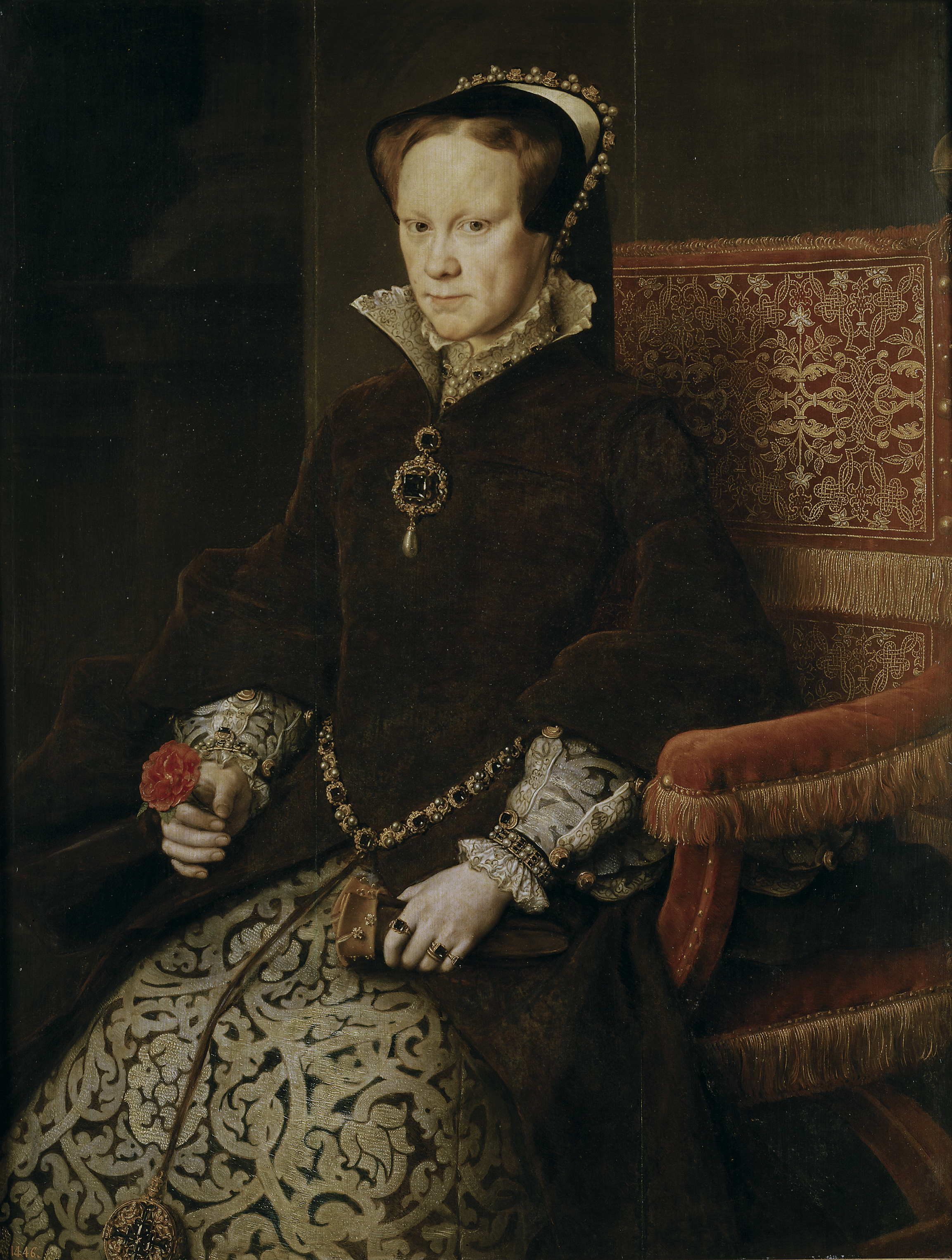Mary I of England, better known as Mary Tudor (b. Greenwich, England 1516 - d.London 1558) Queen of England and Ireland since 1553, being the third woman to enter the English throne after Matilda of England and Jane Grey. It was Queen of England and Ireland, Queen consort of Spain, Naples, Sicily and Sardinia Duchess consort of Milan, Duchess consort of Burgundy and sovereign consort of the Netherlands.
It was the only daughter in marriage since King Henry VIII of England and Catherine ofAragon. Mother's side, was a granddaughter of Ferdinand II of Aragon and Isabella ofCastile. He was a sickly child with vision problems and migraines. Despite her health problems she was a precocious child, her mother gave her a good education and was a student of the scholar Juan Luis Vives. She also studied Greek, science and music.With just 5 years she entertained the visitors playing the virginal, a small harpsichord.Henry VIII adored her and boasted in front of their friends the good performance of it .. At age 9 her father gave her in the court of Ludlow Castle, and several royal prerogatives, only granted the Prince of Wales.
With 2 years she was betrothed to the son of the king of France, Francis I, but 3 yearslater canceled the deal. In 1522 it was agreed by the Treaty of Windsor where she was to marry her cousin, the Emperor Charles V. However, the engagement was brokenyears later.
When King Henry annulled his marriage to Catherine of Aragon (mother of PrincessMary) and married Anne Boleyn, Mary was declared illegitimate daughter, went on to receive treatment from Lady Mary, and was banished from the line of succession. A few days after the death of Queen Anne, the king married Jane Seymour, who died after giving birth to a male heir. Mary was the godmother and chaired the mourning at the funeral of her. In response to this gesture, Henry granted him a house and allowed her to reside in royal palaces. In 1543 Henry married Catherine Parr, who rejoined the family.A year later, by the act of succession, Henry again including her two daughters in the line of succession after the Prince of Wales.
In 1553 Mary took power and became Queen of England and Ireland and initiated a process of conversion to Catholicism in England.
At 37 years, Mary turns his attention to find a husband and bearing an heir to avoidaccessing the throne the Protestant Elizabeth. Mary agreed to marry Prince Philip of Spain, son of her cousin the Emperor Charles V, the future Philip II of Spain, Maria saidfalling in love with him.
At 3 months of marriage, Mary begins to suspect she is pregnant, seeing as her belly grew in volume, but the delivery did not arrive and the time dragged on, so the real doctorsattributed the swelling to a dropsy, a vulgar retention. Her husband convinced her torelease her sister, Princess Elizabeth, the house arrest was likely to be favored subject for it to happen in the event of the death of his wife.
Under the terms of the marriage contract, and Philip would be called "King of England", all official documents (including Acts of Parliament) would be signed with both names and Parliament was to be called under the joint authority. It also minted coins with the face of both. In the marriage contract stipulated that England would not be obliged to providemilitary support to the father of Philip II in any possible war. The powers of Philip II, however, were extremely limited, and the monarchs were not a union as powerful as that of William III and Mary II.
Mary was concerned, mainly, by the religious affairs of the country. Always rejected the break with Rome taken by her father and the establishment of Protestantism initiated byher brother. Restored relations with Rome and the son of her governess the Countess ofSalisbury, Cardinal Reginald Pole, who after the execution of Thomas Cranmer becameArchbishop of Canterbury.
Mary was concerned, mainly, by the religious affairs of the country. Always rejected the break with Rome taken by her father and the establishment of Protestantism initiated byher brother. Restored relations with Rome and the son of her governess the Countess ofSalisbury, Cardinal Reginald Pole, who after the execution of Thomas Cranmer becameArchbishop of Canterbury.
Mary also persuaded Parliament to reject the Protestant laws established by her father, the late King Edward VIII. The restoration of the laws against heretics took place in 1554.She also started currency reform. Religious persecution lasted nearly four years, whichmany Protestant leaders were executed, others were forced into exile and nearly 800remained in the country.
During his reign suffered two false pregnancies, so it is speculated that it could be due to the pressure to create an heir, although the physical symptoms, including breast and thenincluded loss of vision, did suspect that it was some hormonal disorder such as a pituitarygland tumor.
Mary I decreed in her will that her husband should take the regency in the event that their offspring would not have come of age.
His death occurred on November 17, 1558 at the Palace of St. James. Although his willgathered his will to be buried beside his mother, was finally buried in Westminster Abbey, which later shared with Elizabeth I.

No hay comentarios:
Publicar un comentario